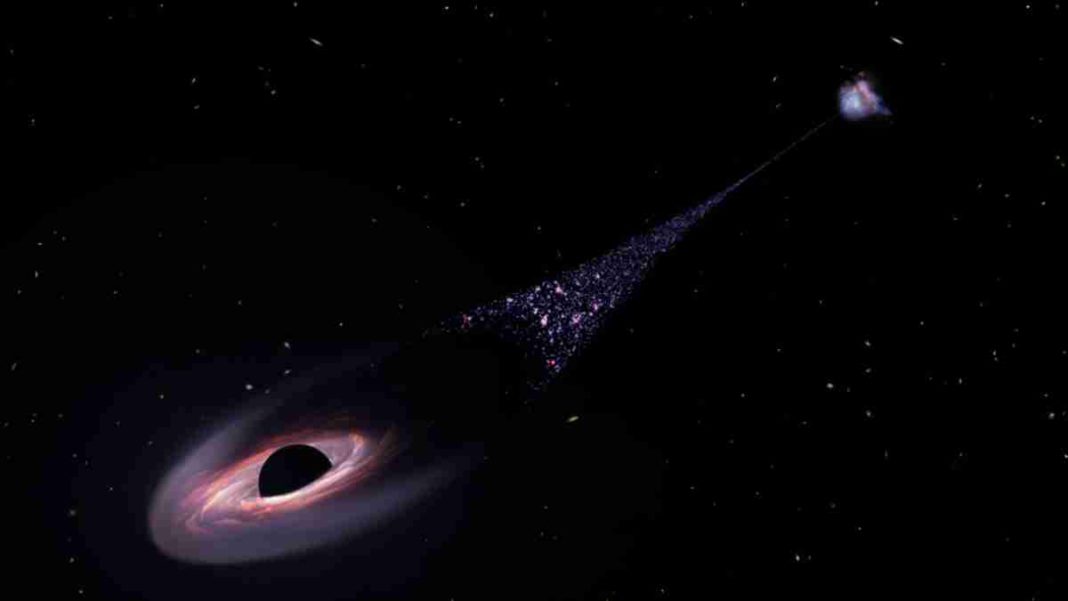UNITED STATES: NASA’s Hubble Space Telescope has observed a supermassive black hole that is moving rapidly through the universe. The black hole is travelling so quickly that it could travel the distance between Earth and the Moon in just 14 minutes while weighing as much as 20 million suns.
The black hole has left a trail of stars that measures 200,000 light-years, which is twice the diameter of our Milky Way galaxy. The trail created by this black hole has resulted in the formation of many new stars, and it is almost half as bright as its host galaxy.
Instead of devouring the stars in front of it, the black hole, according to NASA scientists, is pushing into gas to trigger fresh star formation in a constrained space. The black hole is situated near the tip of its parent galaxy’s column, with a “remarkably bright knot” of oxygen ions at the farthest end.
This black hole was set free after two galaxies merged about 50 million years ago, which brought together two supermassive black holes at their centers. With the addition of a third galaxy and its single supermassive black hole, a “chaotic and unstable configuration” was created.
Researchers think that when the other two black holes left their host galaxy, one of them gained speed from the other two and escaped. The discovery of this black hole will help researchers better understand the evolution of galaxies and the role of black holes in the formation of new stars. NASA plans to use the James Webb Space Telescope and the Chandra X-ray Observatory for follow-up observations to confirm the explanation behind the black hole.
Also Read: NASA to Announce Names of Astronauts Leading Artemis-II Mission to Orbit the Moon



